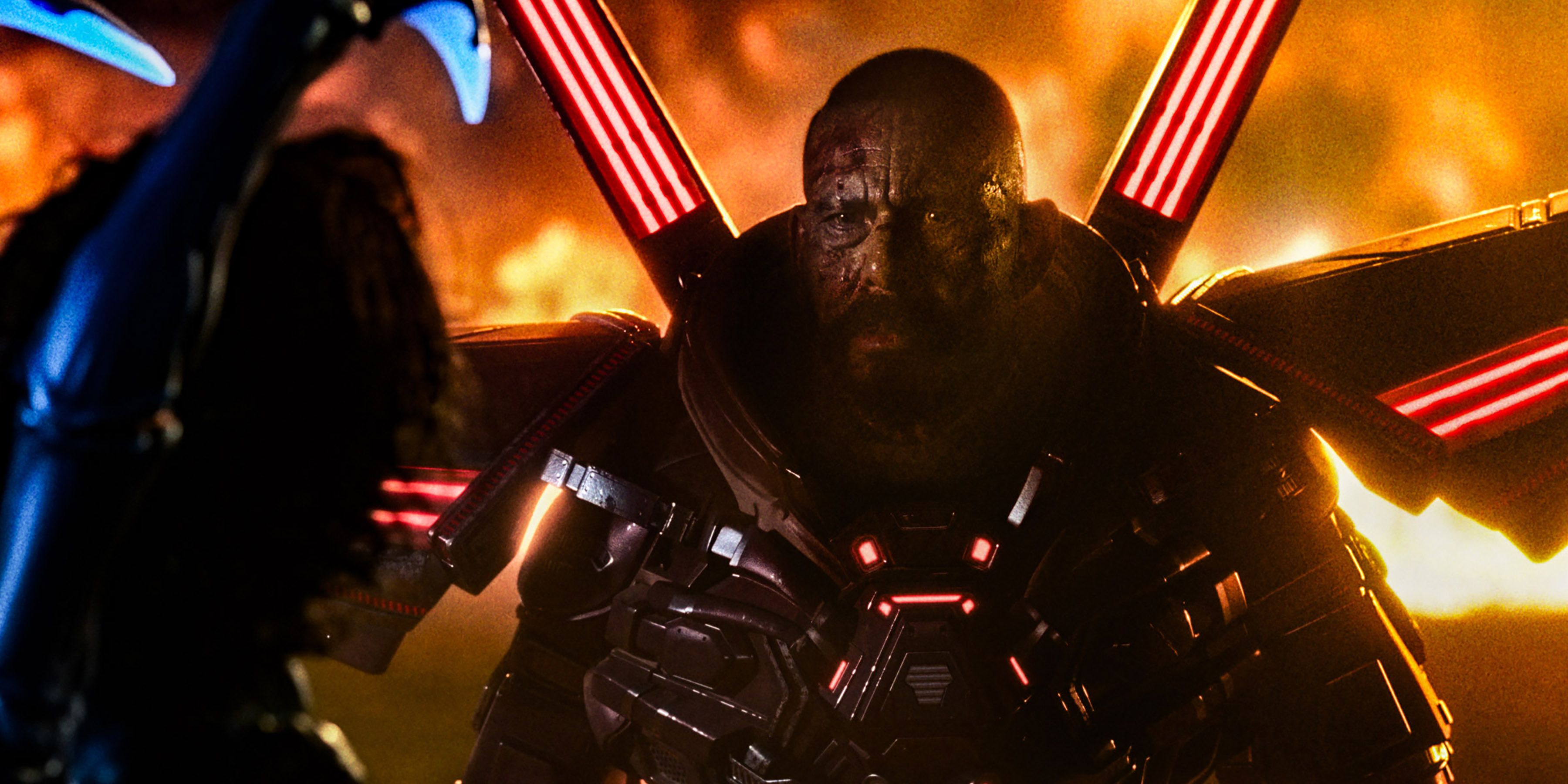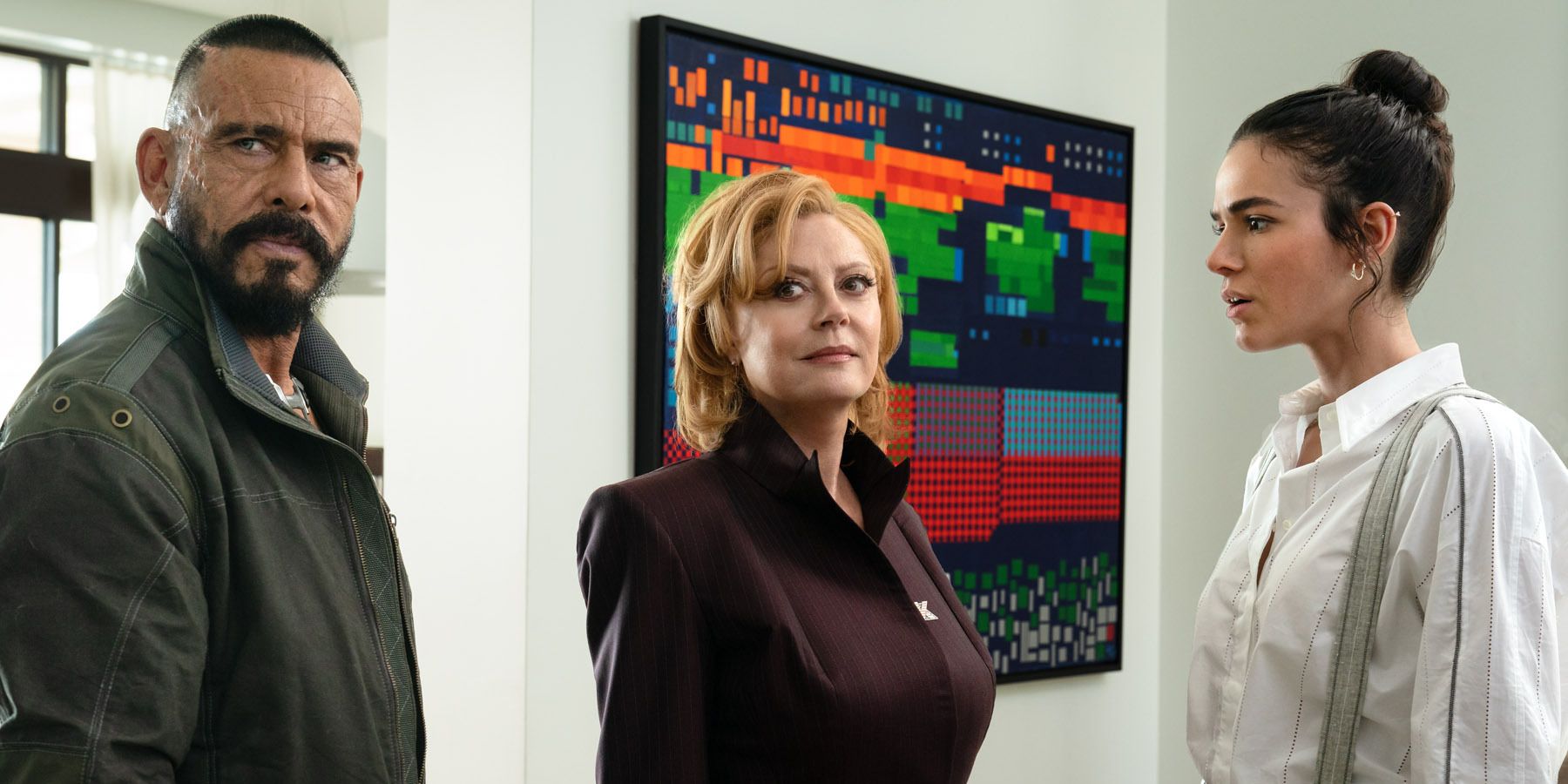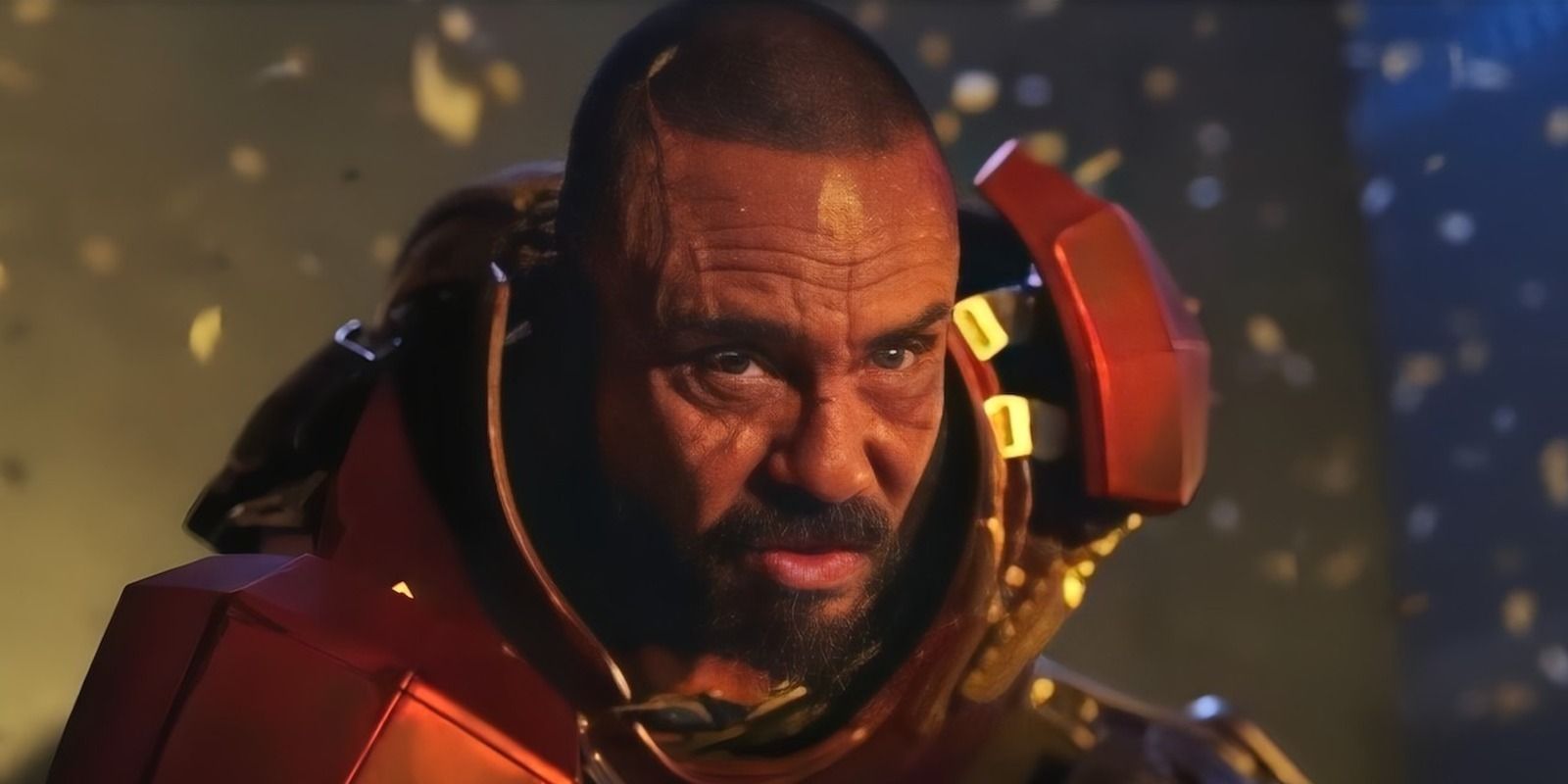The following contains spoilers for Blue Beetle, now playing in theaters.
A big problem the DCEU had in the past revolved around its villains. Movies like Wonder Woman and Suicide Squad struggled with villains like Ares, Max Lord and the Enchantress. While General Zod wasn’t bad, more powerful villains like Steppenwolf and Darkseid were also rushed. This resulted in fans having no emotional connection to these villains the way they did with MCU antagonists like Loki or Thanos.
By contrast, Blue Beetle, fixes the villain problem significantly for the new DCU. It’s all thanks to Raoul Max Trujillo’s sinister Carapax, an OMAC cyborg with just as much firepower as Jaime Reyes and the Scarab. While Blue Beetle is loosely set away from the older DCEU movies, it does an excellent job at fleshing out a sympathetic antagonist to root for. There is, however, one problem that had an easy fix in the editing room.
What is the OMAC?
In the source material, The OMAC (One-Man Army Corps) was initially an enhanced super-soldier named Buddy Blank. He as created by Jack Kirby in 1974 and appeared in OMAC #1. The concept would later be refined by DC through many retcons. It shifted the OMAC from a cyber-hero into a straight-up robotic legion the US government and Lex Luthor tinkered with under the guise of homeland security.
In time, these robots would move from observing metahumans (Observational Metahuman Activity Construct) to being part of a deadly hive mind (Omni Mind And Community). Further retcons made them a squad Maxwell Lord would hijack thanks to Bruce Wayne’s Brother Eye satellite. He’d use this to control the fleet, attack the Justice League and try to consolidate power.
Later, they became a virus along the lines of Extremis. Max hoped to reshape the world by infecting people, changing them into hybrid killers, and having them hunt the Justice League. They’d further evolve from having unlimited data on their enemies, blades, and weapons to being able to predict and mimic some of the opposition. It was all due to them assimilating technology from Amazo, and for this reason, they ranked as some of the Justice League’s deadliest enemies. It’s also the reason animated shows like My Adventures with Superman are using OMACs to hunt Clark Kent.
How Does Blue Beetle Change Its OMAC?
Blue Beetle retools the intimidating OMAC concept by turning it into DC’s version of the Winter Soldier. This revolves around Carapax, a military operative Susan Sarandon’s Victoria Kord uses as a puppet. He’s a cyborg that feels like a mix of Iron Man and Whiplash, packing rockets, blasters and other deadly tools. It turns out Victoria has been outfitting him with various weapons over the years and setting him loose as her personal assassin. Now, she’s hoping he can bring Jaime in, absorb the Scarab code and enhance her OMACs.
Once she has this digital imprint, Victoria can manufacture the ultimate legion to sell en masse. The big twist, though, is that Victoria is actually responsible for Carapax’s tragic past and why he fell into this mercenary life. She bombed the place in Central America that killed his mother, and in time, she was the one keeping him on a tight string. When he fell victim to an explosion while on duty, she turned Carapax into an entity who is half-man, half-machine. Victoria even brainwashed him to forget she was the originator of all his pain, making adjustments and running a lot more experiments on his arsenal. It’s a more human approach to OMAC, which also plays into why Jaime doesn’t kill the villain after he experiences Carapax’s memories in Blue Beetle’s ending.
This tragic backstory allows audiences to feel for Carapax, who was tricked as a child, conditioned to war, and repeatedly gaslit. Victoria kept offering him the hope he would be united with his family someday, which paints a cruel picture of capitalism and exploitation. Sadly, there’s no redemption for Carapax. After having killed many innocents, he chooses to blow himself up, along with Victoria. He thinks he’s purging the pain and going to meet his mother in the afterlife.
Blue Beetle Shouldn’t Have Rushed Carapax’s Reveal
Carapax’s sacrifice is director, Ángel Manuel Soto’s way of giving him peace in a truly emotional finale. But the problem with the Carapax reveal is that it’s packed in way too late. It also feels rushed when it could have been seeded out earlier, teasing a more tragic background. Victoria is hated from the get-go as an arrogant elite, so it’s not like it would have affected her character. In fact, it would have had fans despising her even more, leaving them wondering when Carapax would be broken out his kill mode.
By cramming that twist in at the end to evoke something visceral feels a lot like the “Martha!” moment from Batman v Superman: Dawn of Justice that got the Dark Knight to be friends with the Man of Steel. Granted, Soto has more nuance and a better execution, but the film is over two hours. That’s more than enough time to really highlight Carapax as a war slave, with snippets showing his programming breaking and that there was more to his history beneath the surface. This way, fans would have had more compassion and empathy for the character from the start. When this is finally established, it doesn’t last long as he literally destroys his shell seconds after.
Not even Jaime really gets to soak in Carapax’s lost sense of identity or him being a pawn, or if atonement could have been reached. Sadly, Carapax’s full potential is squandered, when he could have drawn out so much resonance the way figures like Killmonger did. Fans wouldn’t have condoned his actions, but they’d have related to his agony for much longer, eliciting deeper emotions as he kept battling Jaime in numerous scenes. Ultimately, Carapax is still a major improvement from past DC films. However, his angst needed more time to waft over viewers and really let them absorb the conflict Jaime does at the end when he learns he’s been feuding with the soul of a lost child all this time.
See how Carapax’s fate unravels in Blue Beetle, now playing in theaters.




